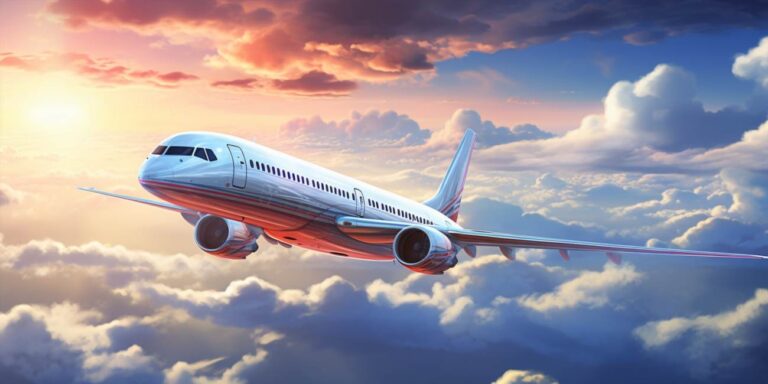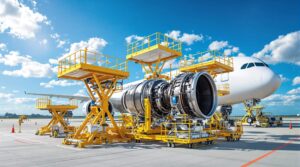Imagine a scenario where an aircraft experiences turbulence or encounters sudden crosswinds. In such situations, the yaw damper steps in as the unsung hero, countering the tendency of the aircraft to yaw or swerve unintentionally. This mechanism is particularly crucial for large commercial aircraft, where external forces can significantly impact stability.
The primary function of the yaw damper is to minimize oscillations around the vertical axis. By doing so, it ensures a smoother and more predictable flight experience for both passengers and crew. The yaw damper achieves this by detecting any deviation from the desired heading and swiftly applying corrective measures.
Now, let’s delve into the purpose of this ingenious device. Essentially, the yaw damper contributes to the overall safety and comfort of the flight. It aids in preventing dutch roll motion, a combination of roll and yaw oscillations that can be unsettling for passengers and potentially hazardous if left uncontrolled.
Picture the yaw damper as a vigilant guardian, constantly monitoring the aircraft’s yaw behavior and making real-time adjustments to maintain a steady course. This not only enhances the pilots’ situational awareness but also reduces their workload, allowing them to focus on other critical aspects of flying.
It’s worth noting that the yaw damper is often integrated into the aircraft’s autopilot system. This synergy between automation and mechanical control ensures a seamless and efficient response to yaw disturbances. The yaw damper becomes an integral part of the aircraft’s fly-by-wire system, further exemplifying its technological sophistication.
Yaw damper components and how they work to stabilize the aircraft
Yaw damper components and their role in stabilizing aircraft:
When it comes to ensuring a smooth and stable flight, the yaw damper plays a crucial role in maintaining control and enhancing overall safety. The system comprises several components, each with a specific function aimed at countering adverse yawing motions.
The primary components of a yaw damper system include the accelerometers, gyroscopes, control surfaces, and the flight control computer. Let’s delve into how each of these elements contributes to the overall functionality of the yaw damper.
Accelerometers: These sensors measure the rate of change of lateral acceleration, providing essential data about the aircraft’s movements. The information gathered by accelerometers is then fed into the flight control computer.
Gyroscopes: Gyroscopes, often referred to as gyros, play a key role in sensing the aircraft’s yaw rate. This data is crucial for determining if the aircraft is deviating from its intended course.
Control Surfaces: The yaw damper system interacts with the aircraft’s rudder and ailerons to counteract any undesired yawing motion. The control surfaces are manipulated based on the inputs from the accelerometers and gyros, ensuring a prompt response to deviations from the desired flight path.
Flight Control Computer: The brain of the yaw damper system, the flight control computer processes the data from accelerometers and gyros, computes the necessary control surface movements, and sends commands to the actuators that manipulate the control surfaces. This entire process is swift and occurs in real-time, contributing to the system’s effectiveness in stabilizing the aircraft.
Now, let’s explore how these components work together to stabilize the aircraft. When the yaw damper system detects an unwanted yawing motion, the accelerometers and gyros sense the deviation from the intended course. The flight control computer then processes this information and determines the appropriate corrective action.
The flight control computer sends commands to the actuators, which, in turn, adjust the position of the rudder and ailerons. These control surface movements counteract the yawing motion, restoring the aircraft to its intended heading. The entire process happens seamlessly and rapidly, contributing to a smoother and more controlled flight experience.
By employing a yaw damper system, aircraft manufacturers enhance the overall stability and safety of their aircraft. This technology is particularly valuable during challenging weather conditions or when encountering unexpected disturbances in the air. Pilots can rely on the yaw damper to provide additional support in maintaining a steady and controlled flight, ultimately contributing to the safety and comfort of passengers on board.
How is yaw damper connected to the flight controls
The autopilot system in modern aircraft is a marvel of engineering, seamlessly integrating with various components to ensure a smooth and controlled flight. One crucial element that plays a pivotal role in this system is the yaw damper. This device is intricately connected to the flight controls, autopilot, flight director system, cockpit controls, and even the rudder pedals.
Picture the cockpit as a nerve center where all these elements converge to create a symphony of control. The flight controls, which include the ailerons, elevators, and rudders, are the physical interfaces through which the pilot maneuvers the aircraft. The autopilot takes this a step further by automating these inputs based on pre-set parameters and inputs from various systems.
Now, enter the flight director system, a sophisticated tool that provides guidance to the pilot. It communicates with the autopilot and offers visual cues on the cockpit displays. The cockpit controls act as the command center for the pilot, allowing manual intervention when needed. Here, the rudder pedals come into play, providing the means to control the yaw motion of the aircraft.
The intricate dance of these components is where the yaw damper asserts its significance. This device senses and dampens any undesirable yaw motion, ensuring stability and reducing the workload on the pilot. It receives signals from the flight controls, autopilot, and flight director system, adjusting the rudder as needed to maintain a coordinated and controlled flight.
Think of it as a behind-the-scenes maestro, orchestrating the harmony of flight. The autopilot flight director system cockpit controls rudder pedals signals intertwine seamlessly, creating a ballet of precision in the skies.
When is the yaw damper system used during a typical flight
During a typical flight, the yaw damper system plays a crucial role in maintaining stability and control, ensuring a smooth journey from takeoff to landing. As the aircraft accelerates down the runway during the takeoff phase, the yaw damper system actively counters any yawing motion induced by factors such as engine thrust asymmetry or crosswinds. This initial stage is critical, demanding precise control to ensure a safe transition from ground to air.
Once the aircraft has lifted off and entered the climb phase, the yaw damper system continues to operate. As the plane ascends through different altitudes, variations in atmospheric conditions can lead to subtle changes in aerodynamic forces. The system responds by adjusting control surfaces, counteracting any yaw tendencies and contributing to the overall stability of the climb. This phase sets the trajectory for the remainder of the flight.
As the aircraft levels off into the cruise phase, the yaw damper system remains vigilant. Even in the absence of pronounced changes in pitch or bank angles, the system actively monitors and mitigates any yaw disturbances caused by external factors like turbulence. This ensures a comfortable experience for passengers and optimal aerodynamic efficiency throughout the extended cruising period.
During the descent phase, the yaw damper system adapts to the changing aerodynamic conditions as the aircraft descends towards its destination. As altitude decreases, the atmospheric environment introduces new challenges, and the system fine-tunes its responses to maintain stability. This phase marks the transition from cruising altitude to the preparation for the approaching landing.
Approaching the landing phase, the yaw damper system is crucial for a smooth touchdown. Crosswinds, a common challenge during landings, can induce yawing moments that, if left unchecked, could lead to difficulties in alignment with the runway. The system actively counters these crosswind effects, working in conjunction with other control systems to ensure a safe and controlled landing.
Even in the presence of atmospheric disturbances like turbulence, the yaw damper system continues to be a stalwart companion, minimizing the impact on yaw motions and enhancing the overall flight experience. Its continuous operation, seamlessly integrated into the broader flight control system, highlights its significance in addressing dynamic challenges across various phases of a typical flight.






